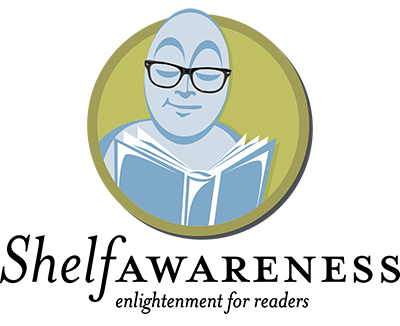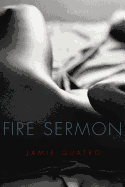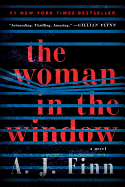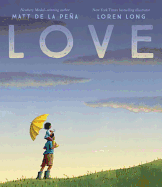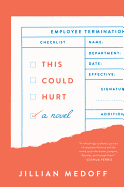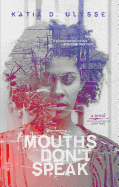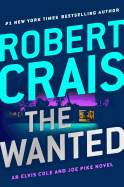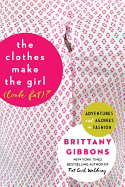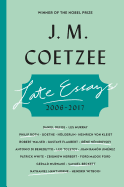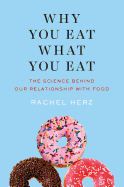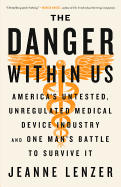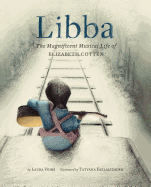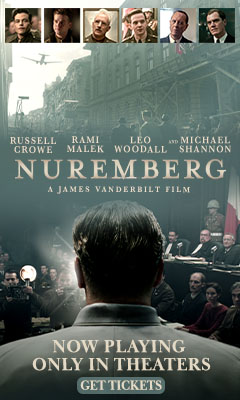Tuesday, January 23, 2018
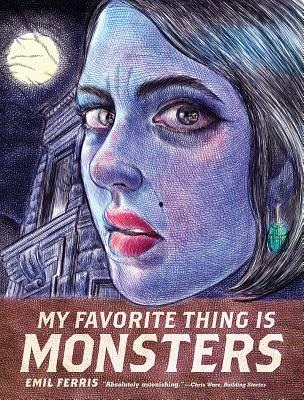 Every year is a great year for comics and graphic novels, provided you know where to look, and 2017 was no exception, with books from DC and Marvel coexisting alongside the weirder worlds of Image, Fantagraphics and indie comics. Despite the wealth of options, my 2017 was dominated by the audacious vision of Emil Ferris in her debut graphic novel, My Favorite Thing Is Monsters. The first entry in a two-volume epic, My Favorite Thing Is Monsters is set in Chicago in the late '60s as seen by a 10-year-old girl who's obsessed with pulp horror magazines. The narrative is grounded in a complicated murder mystery that spins off in strange and deeply sad directions. Ferris's medley of real-life horror and outlandish B-movie pulp--the protagonist pictures herself as a werewolf--might be unwieldy in lesser hands, but the whole thing is tied together and elevated by the utterly distinct pen-on-notebook-paper art. It's a masterpiece.
Every year is a great year for comics and graphic novels, provided you know where to look, and 2017 was no exception, with books from DC and Marvel coexisting alongside the weirder worlds of Image, Fantagraphics and indie comics. Despite the wealth of options, my 2017 was dominated by the audacious vision of Emil Ferris in her debut graphic novel, My Favorite Thing Is Monsters. The first entry in a two-volume epic, My Favorite Thing Is Monsters is set in Chicago in the late '60s as seen by a 10-year-old girl who's obsessed with pulp horror magazines. The narrative is grounded in a complicated murder mystery that spins off in strange and deeply sad directions. Ferris's medley of real-life horror and outlandish B-movie pulp--the protagonist pictures herself as a werewolf--might be unwieldy in lesser hands, but the whole thing is tied together and elevated by the utterly distinct pen-on-notebook-paper art. It's a masterpiece.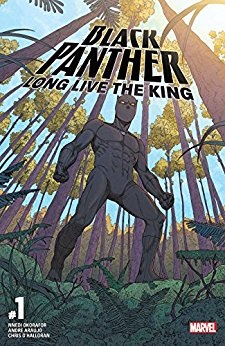 Filling out my year in comics were some exceptional ongoing series, including Ta-Nehisi Coates's run on Black Panther, which continues to be a thoughtful meditation on power and politics. Roxane Gay's Black Panther: World of Wakanda provided backstory and nuance to characters introduced by Coates, and I'm sure Nnedi Okorafor's Black Panther: Long Live the King, due out in March 2018, will prove promising. Last year also saw the timely release of the long-awaited Bitch Planet Vol. 2: President Bitch, which lives up to its confrontational title with more tales of feminist revolt in a dystopian society. Meanwhile, Saga continues to prove its relevance five years after the first issue's release. Brian K. Vaughan's focus on the bonds of family, love and friendship in a strange, conflict-riddled universe rings as true in 2017 as ever, brought to life as always by Fiona Staples's remarkable art. This is just a sampling of the many comics and graphic novels that brought readers (like me) through a turbulent year. --Hank Stephenson, bookseller, Flyleaf Books, Chapel Hill, N.C.
Filling out my year in comics were some exceptional ongoing series, including Ta-Nehisi Coates's run on Black Panther, which continues to be a thoughtful meditation on power and politics. Roxane Gay's Black Panther: World of Wakanda provided backstory and nuance to characters introduced by Coates, and I'm sure Nnedi Okorafor's Black Panther: Long Live the King, due out in March 2018, will prove promising. Last year also saw the timely release of the long-awaited Bitch Planet Vol. 2: President Bitch, which lives up to its confrontational title with more tales of feminist revolt in a dystopian society. Meanwhile, Saga continues to prove its relevance five years after the first issue's release. Brian K. Vaughan's focus on the bonds of family, love and friendship in a strange, conflict-riddled universe rings as true in 2017 as ever, brought to life as always by Fiona Staples's remarkable art. This is just a sampling of the many comics and graphic novels that brought readers (like me) through a turbulent year. --Hank Stephenson, bookseller, Flyleaf Books, Chapel Hill, N.C.
Fire Sermon
by Jamie Quatro
A lean first novel steeped in theology, suburban domesticity, literary criticism, child-rearing and, most dramatically, infidelity, Fire Sermon sizzles and cools to the rhythm of its narrator Maggie's moods and meanderings. Maggie and Thomas married in 1993 in a tony Malibu wedding, but she is a bit of a loose cannon. After stints in graduate school at Princeton and Vanderbilt, they have two children and settle down near Nashville.
In 2013, Maggie begins to correspond with James, a married theology-centric poet at Princeton whose work moves her. Soon they are regularly e-mailing, arranging to meet at conferences, and finally copulating heatedly on the floor of a Chicago Hyatt room. We know how it goes: lonely woman with comfortable family life falls for attentive married man, and a match is struck to burn everything down. In Fire Sermon, however, Maggie's domestic life doesn't go up in flames--her inner life does.
Fire Sermon is a contemporary take on an age-old story. Politics hardly enters Maggie's head. The 9/11 tragedy is a bad memory; the long wars it spawned not even mentioned. Quatro is more interested in what Frost called "inner weather." The heat of Maggie's lust for James is consummated a few intermittent times over the years, but it never goes away--even when she and Thomas celebrate their 25th anniversary at a Naples, Fla., high-rise hotel where Quatro observes, "they've worn down together, and what's left is understanding and kindness." Perhaps the conflict between head and heart is itself God's will. --Bruce Jacobs, founding partner, Watermark Books & Cafe, Wichita, Kan.
Discover: Fire Sermon is a fervent innovative take on an age-old story of infidelity and guilt.
This Could Hurt
by Jillian Medoff
Corporate America during nine months of the Great Recession is the setting of This Could Hurt, Jillian Medoff's shrewd and deeply affecting fourth novel. Ellery Consumer Research--with offices in New York City, Raleigh and Atlanta--is a cutting-edge, boutique market research firm for clients like Walmart and General Motors. Medoff roots the story amid the company's shrinking human resources department in New York, offering a well-drawn ensemble cast of flawed characters who orbit around Rosalita "Rosa" Guerrero, the 64-year-old HR chief.
Rosa is a seasoned old-timer--personally and professionally. She is bossy, but fair. Her take-charge, no-nonsense approach serves as a "voice of clarity and calm" in her quest to advocate for and boost the morale of those in her department despite drastic corporate cutbacks. Rosa's predicament grows more complex when she's forced to fire the v-p of operations--a trusted confidant of Rosa and her right hand--who was being groomed as her successor, but was embezzling from the company.
His departure leaves an open door for the rest of the HR staff, most of whom are scrambling to find ways to stay employed under the corporate restructuring and downsizing. Medoff (I Couldn't Love You More) has a spot-on grasp on the often cutthroat nuances of office politics--especially within the high-stakes uncertainty of the Great Recession. She skillfully reveals the modus operandi of the staff as they vie to keep their jobs. Sharply drawn intimate details about the lives of each character add even greater depth and broaden the timeless appeal of this very smart, thoroughly absorbing story. --Kathleen Gerard, blogger at Reading Between the Lines.
Discover: This shrewd novel of corporate culture examines how a group of HR employees faces fallout from the Great Recession.
Mouths Don't Speak
by Katia D. Ulysse
As Jacqueline, a Haitian art teacher living in Baltimore, watches the news reports of the 2010 Haiti earthquake, she mourns for her country and prays that her family, somehow, is alive. Her husband, Kevin, a former marine who battles PTSD, takes care of their three-year-old daughter, but is often too wrapped up in his own suffering to be sympathetic to Jacqueline's. In the aftermath of the quake, Jaqueline struggles with her national identity--she left Haiti for boarding school when she was 10, and while she considers herself Haitian, she feels disconnected from both the country and her parents, who sent her away from it. "She had never considered herself an expat. In order for her to identify as an expatriate, she had to have been a patriot in the first place." She had never planned to see Haiti again, but almost a year after the earthquake, she feels compelled to return. "She wanted to remember the person she was long ago, before leaving Haiti. The country was a part of her no matter how much she tried to run away from it."
With lush descriptions and Creole-inflected dialogue, Katia D. Ulysse frankly and deftly writes about the nuances and class differences in Haiti. Mouths Don't Speak explores how trauma touches us at home and abroad, wherever those places may be. This includes the experiences of the underserved kids Jaqueline teaches, American veterans, the earthquake victims, and children and their parents. Ulysse illustrates the complicated but unbreakable connections we have to family and home, and shows how privilege doesn't necessarily keep you from tragedy. --Katy Hershberger, freelance writer and bookseller
Discover: One woman grapples with home and family following the Haiti earthquake.
Mystery & Thriller
The Wanted
by Robert Crais
After Devon Connor finds a Rolex, designer clothes and a thick roll of cash in her teenage son's room, she hires Los Angeles private eye Elvis Cole to see what kind of shady business the kid, Tyson, is involved in. Turns out he and two buddies have been burglarizing the rich. Still, it doesn't sound like Elvis's toughest case--until Tyson goes missing and one of his accomplices is murdered. It appears Tyson and his friends stole something from a very powerful person who will stop at nothing to get it back, and it'll take Elvis and his partner, Joe Pike, to prevent Tyson from ending up dead.
With The Wanted, his 17th Elvis Cole novel, Robert Crais proves yet again he's a master of lean, mean storytelling and creating memorable characters. Even people who do very bad things are allowed moments of humanity and vulnerability. The relationships are just as important as the plot--the friendship between the killers somewhat mirrors that between Cole and Pike--and what Crais leaves off the page is as important as what he includes. Cole's cat is famous for his crankiness, but when he senses despair in Cole, he is right there to offer his support in a way both simple and deep. The case involves a McGuffin-like device and becomes almost secondary to the complex characters, but it does receive a satisfying resolution. Cole and Pike fans definitely want to get their hands on this one. --Elyse Dinh-McCrillis, blogger at Pop Culture Nerd
Discover: Elvis Cole and Joe Pike track down a missing teenager who has been robbing wealthy people and might have crossed the wrong person.
The Woman in the Window
by A.J. Finn
A.J. Finn's debut, The Woman in the Window, is a remarkably assured, compelling white-knuckle, cat-and-mouse psychological thriller. Fans of Shirley Jackson's neurotic heroines and Margaret Millar's explorations of loneliness, isolation and paranoia will rejoice in discovering Dr. Anna Fox, an agoraphobic alcoholic and former child physiatrist. She has not left her four-level Harlem townhouse in nearly a year. She is also the definition of an unreliable narrator as she self-medicates with copious amounts of anxiety and depression prescription pills, usually taken with a glass--or entire bottle--of merlot.
Separated from her husband and daughter, Anna's days and nights are filled with watching her favorite noir movies, playing online chess and ministering to people in her online agoraphobia support group. She also watches her neighbors through her telephoto camera lens, like James Stewart in Rear Window. She witnesses one of her neighbors being stabbed to death, but the police find no signs of violence and the neighbors insist no such woman lived there. Is she hallucinating, or has there been a murder?
Chock full of delicious red herrings, jaw-dropping twists and revelations, The Woman in the Window is a sinister and clever nail-biter. Anna Fox is a marvelous, complex and engaging heroine. Film noir fans will pick up extra clues as some of Anna's film choices (Shadow of a Doubt; Midnight Lace) hint at twists to come. Finn (a pseudonym for William Morrow v-p and executive editor Dan Mallory) has written a tense, darkly funny, psychologically sound thriller. --Kevin Howell, independent reviewer and marketing consultant
Discover: An agoraphobic witnesses a murder in this amazingly assured mystery debut.
Biography & Memoir
The Clothes Make the Girl (Look Fat)?: Adventures and Agonies in Fashion
by Brittany Gibbons
In her endearingly profane 2015 memoir, Fat Girl Walking, social media personality Brittany Gibbons wrote about growing up lower-middle class in small-town Ohio, and her lifelong struggle to make peace with her plus-size body. The Clothes Make the Girl (Look Fat)?: Adventures and Agonies in Fashion makes clear that, while the struggle isn't over, Gibbons sees no reason not to look fetching while fighting.
The Clothes Make the Girl has a self-help aspect that diverges from Fat Girl Walking's more personal reminiscences and woman-on-the-brink humor. It has a patchwork feel, darting from topic to topic: shopping for a wedding dress; Spanx and how to modify shapewear for bathroom needs ("Just don't get too aggressive with your cutting; it's all too easy to go from shapewear to assless chaps"); and maternity underwear, about which surely no one has ever written more, or more enthusiastically, than Gibbons. She touches on key moments in her life--working at the Gap, discovering Lane Bryant, modeling plus-size clothes for Lands' End, first seeing Clueless--that ultimately led her to become "the openly plus size I am today."
Gibbons often sounds like the love-child of Samantha Jones and Roseanne Barr. Her response to the notion of being judged for being fat and pregnant: "The only 'right' way to do pregnancy weight is with your doctor. Everyone else can suck it." --Nell Beram, freelance writer and author
Discover: In her second book, body-acceptance advocate Brittany Gibbons is all for looking like a knockout while fighting the good fight.
History
The Doomsday Machine: Confessions of a Nuclear War Planner
by Daniel Ellsberg
In 1961, as consultant to the Office of the Secretary of Defense, Daniel Ellsberg (Secrets: A Memoir of Vietnam and the Pentagon Papers) saw U.S. plans for nuclear war that were projected to kill about 600 million people. "From that day on, I have had one overriding life purpose; to prevent the execution of any such plan." His career gave him years of classified access to information on U.S. nuclear war planning and crises, and he copied every top secret document that went through his office. Enough of them have now been declassified to back up The Doomsday Machine.
Although public fear of nuclear war has ebbed in recent decades, Ellsberg believes nothing has changed fundamentally. He considers U.S. nuclear planning to have been completely immoral to the point of insanity. Deterrence of a Russian first strike was always a fiction; the plans are for a U.S. first strike. And as far as he is concerned, plans to kill hundreds of thousands of civilians in a first strike "is a terrorist threat. Any nation making such threats is a terrorist nation. That means the United States and all its allies."
From a close insider's perspective, he describes how the U.S. came to create and adjust this potentially world-destroying arsenal, how presidents have used it to threaten foreign leaders, and the responses of other nuclear powers. We have narrowly avoided many previous crises, but he fears that the current U.S. administration could charge straight into a worst-case scenario. This book deserves to be widely read, discussed and acted upon. --Sara Catterall
Discover: The former high-level Defense Department analyst who leaked The Pentagon Papers describes how the U.S. built the potentially world-destroying nuclear arsenal that still threatens us all.
Essays & Criticism
Late Essays
by J.M. Coetzee
With wondering intelligence and a deep understanding of history, Nobel Laureate J.M. Coetzee (Disgrace) tackles literary classics and lesser-known works in Late Essays.
The volume includes 23 essays written between 2006 and 2017. They offer interesting historical and biographical details of major literary figures like Daniel Defoe, Johann Wolfgang von Goethe and Samuel Beckett. They also dissect prevalent themes in major literary works like The Scarlet Letter and The Sorrows of Young Werther. Coetzee turns the same analytical eye on modern writers like Philip Roth; he relates Nemesis to fictional treatments of the plague. Coetzee also shines light on writers less known in the English-speaking world, including French Jewish author Iréne Némirovsky and Spanish author Juan Ramón Jiménez.
Perhaps the best essay is Coetzee's analysis of Gustave Flaubert's Madame Bovary. He astutely examines letters Flaubert wrote while working on the classic novel, illuminating his construction of the famous Emma character and his groundbreaking compositional style. Coetzee argues that Flaubert showed how "psychological analysis could have the same swiftness, clarity, and forward drive as narrative." He elicits the ways Flaubert inhabited the world of his doomed heroine: "in the white heat of creation the individual self of the artist is consumed and absorbed into his creative self."
By focusing the mysterious inspirations of so many luminary authors, Coetzee has made his Late Essays into a vibrant and inquisitive work of literary criticism. --Scott Neuffer, writer, poet, editor of trampset
Discover: South African Nobel Laureate J.M. Coetzee acts as book critic in this engaging collection of essays that focuses on literary classics.
Science
Why You Eat What You Eat: The Science Behind Our Relationship with Food
by Rachel Herz
Food, along with sex, is key to the survival of humans and provides pleasure along with sustenance. Our relationship with food is exceptionally complex and influenced by a host of external factors. In Why You Eat What You Eat, neuroscientist Rachel Herz reveals the surprising reasons we decide what (and how much) to eat.
Herz identifies different types of tasters ("supertasters" are most likely to dislike strong flavors like cilantro, but are also less likely to become alcoholics, while sriracha-loving "non-tasters" who yearn for big flavor are more susceptible). Yet taste alone does not solely dictate our food choices. Smell is an important influencer, and the stronger the aroma of a food, the higher the satisfaction level and the less we will consume. The adage "our eyes are bigger than our stomachs" is true, so eating meals on small plates will satisfy our brains when the plate is empty. But Herz cautions against the "health halo effect"--if a snack promotes its health benefits too much, we will reach for seconds. Are organic food consumers healthier than the rest of us? Not necessarily, since the health benefits of organic food entitles consumers to choose decadent desserts along with their kale salad. Conversely, Herz discusses comfort food--satisfying but unhealthy--and how nostalgia and other factors (like a reaction to a sports game or the night of the 2016 presidential election) may tell our brains to shovel it in.
Using dozens of research studies, Herz provides readers with a greater awareness of the brain's complicated and contradictory relationship with food, and a roadmap to make smarter food choices down the road. --Frank Brasile, selection librarian, writer, editor
Discover: Revealing and fun, this tour of the relationship between food and the brain will enable readers to make informed decisions about what, and how much, we eat.
Health & Medicine
The Danger Within Us: America's Untested, Unregulated Medical Device Industry and One Man's Battle to Survive It
by Jeanne Lenzer
Cardiac stents, artificial knees and hips and pacemakers are just a few of the well-known medical devices routinely implanted into humans. But as Jeanne Lenzer expertly discovers in The Danger Within Us, they are not as rigorously regulated as pharmaceuticals. Their side effects are not tracked. Many either don't work as advertised or do more harm than good, and some are used for purposes other than originally intended, with dire results.
Blazing a new trail in medical research, Lenzer examines these medical devices and the industry surrounding them. Rather than looking at multiple cases, she focuses on one man with epilepsy, Dennis Fegan, who had a vagus nerve stimulator implanted into his neck; the consequences were life-threatening. Not only did it not regulate his seizures, it left him with a wire and blood clot embedded in his jugular vein.
Lenzer follows the money: from manufacturers to doctors who push these implants on patients, receiving bonuses and kickbacks from the sales. Furthermore, she uncovers a lack of regulation at the federal level for these products. "Medical inventions... are now the third leading cause of death in the U.S., killing an estimated 225,000 to 440,000 Americans each year." It is a scary scenario that needs to be addressed on multiple levels. For anyone considering surgery, or who has had surgery and suffered strange or unexplained side effects, this book is a definite read. --Lee E. Cart, freelance writer and book reviewer
Discover: These well-researched findings show how medical devices and implants may do more harm than good.
Children's & Young Adult
Love
by Matt de la Peña, illus. by Loren Long
Matt de la Peña started writing Love as an uplifting poem for children, but he soon felt that something was missing. He had, in his words, failed to "acknowledge the other side." He decided he wanted to share with children an honest picture of love: the world holds sadness and loss in addition to comfort and sweetness. So Love became the moving book that it is today, in which a different child on each spread, in all colors of the human rainbow, learns about love in its multifarious forms.
After the tender, quiet beginning in which "there is light/ and two wide-eyed figures standing/ near the foot of your bed,/ and the sound of their voices is love," things turn a bit darker. On one spread, smoke pours from an apartment building's windows and "you're pulled from sleep and whisked/ into the street, where a quiet old/ lady is pointing to the sky./ 'Stars shine long after they've flamed/ out,' she tells you, 'and the shine they/ shine with is love.'" In subsequent pages, you discover that "it's not only stars that flame out..../ It's summers, too./ And friendships./ And people." Kindness and warmth suffuse every page, so readers never doubt that love is ever-present, even in sorrow and confusion.
Beautiful illustrations by Loren Long (Good Day, Good Night; Nightsong) are made using a process of collaged monotypes overlaid with acrylic paint. With its textures and irregularities, the artwork is, as Long says, "a bit raw, a bit vulnerable, a bit messy.... Kind of like love itself." True words. Long and de la Peña (Last Stop on Market Street, illustrated by Christian Robinson) hit the mark with Love, eschewing sentimentality and banalities for a portrait of love framed in honesty. --Emilie Coulter, freelance writer and editor
Discover: Matt de la Peña and Loren Long offer the world Love, a gentle, poetic picture book about love in all circumstances, even the tough ones.
Libba: The Magnificent Musical Life of Elizabeth Cotten
by Laura Veirs, illus. by Tatyana Fazlalizadeh
In a collaborative picture book debut with illustrator Tatyana Fazlalizadeh, folk singer-songwriter Laura Veirs--known best by families for her 2011 children's album Tumble Bee--gives young readers a loving portrait of the life of African American outsider musician Elizabeth "Libba" Cotten.
The narrative opens on Libba as a girl, smiling in shut-eyed bliss as she hears music in the rhythms of her daily life in early 20th-century North Carolina. Left-handed Libba, her face rapt in concentration, practices with brother's guitar, playing it "upside-down and backwards," and "before you could say 'DANG,' " she's "written her first song." Not "even thirteen yet" and Libba had written "Freight Train." Then, scenes of Libba's next 40 years of life speed past, painted on freight train cars across a single spread. Now a grandmother, Libba finds work as a housekeeper in Ruth Crawford Seeger's household, where we again see her luminous listening smile and the Seegers hear her music like "a gentle spring rain," a prelude to her belated stardom.
Veir's reverence for her subject shines, her text studded with curving passages from Cotten's songs, and an extensive author's note fills in the finer details gleaned from research and interviews. Fazlalizadeh's drawings strike a perfect balance of sooty graphite shading and soft colors, the contrast making guitars and faces look smooth enough to touch. Parents and teachers should cue up "Freight Train" ahead of time as children will beg to hear Cotten's recordings after reading this inspiring love song to an American talent who always kept rolling. --Jaclyn Fulwood, youth services manager, Main Branch, Dayton Metro Library
Discover: African American folk legend Elizabeth Cotton taught herself guitar as a child, then rose to stardom late in life after a 40-year hiatus from music.
| Advertisement nuremberg--now playing in theaters |

